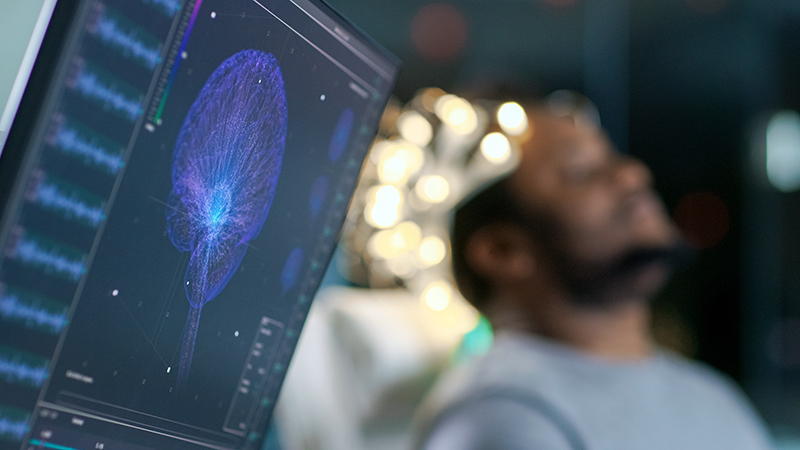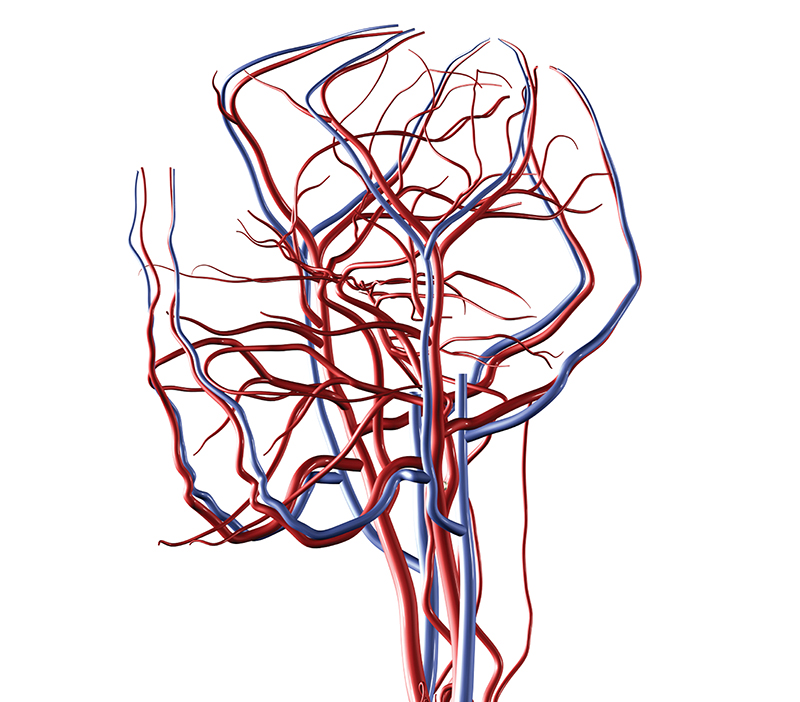
Signal Processing Methods Monitor Cranial Pressure
Originating Technology/NASA Contribution
When you think of a beating heart, you might assume it beats at regular intervals, but in actuality, velocity and pressure change with every beat, and the time interval between each beat is different. Now a NASA-developed technology is helping researchers understand blood flow and pressure in ways that may improve treatment for victims of brain injury and stroke.
Dr. Norden Huang, a scientist and mathematician at Goddard Space Flight Center, invented a set of algorithms for analyzing nonlinear and nonstationary signals that developed into a user-friendly signal processing technology for analyzing time-varying processes.
Efficient and adaptive, it can be used to analyze data sets for a wide variety of applications and even improves accuracy when used with linear and stationary signals. Dubbed the Hilbert-Huang Transform (HHT), it is a continuation and adaptation of early 20th century mathematician David Hilbert’s work on signal analysis.
An advantage of HHT over other common signal analysis techniques, like Fourier transforms, is that it is more precise and accurate, capable of sharper filtering while preserving the integrity of the data. It is also flexible with the types of data it can analyze, since it does not require the data sets to be linear and stationary.
As an added bonus, this series of algorithms is relatively easy to implement and operate.
While NASA designed the technology for structural health monitoring and damage detection, like nondestructive testing of the space shuttle orbiters, the applications outside of the Agency are nearly limitless. For example, the HHT method can assist in the understanding of sound and vibrations for highway noise reduction, submarine design, and speech and sound recognition analysis.
It can also help in environmental analysis, like mapping land and water topography or water and wind dynamics. Industrial applications include machine monitoring.
The work on this project led to a Federal Laboratory Consortium “Technology Leadership Award” for the HHT method in 2000, as well as recognition as one of R&D Magazine’s “R&D 100” (a list of the top 100 inventions of the year) in 2001, and the “NASA Government Invention of the Year” in 2003.
Partnership
When NASA was founded, the U.S. Congress required that the Agency work to make its technologies available to the public. Traditionally, NASA has made public announcements of patents available for license, either through news releases or publication in the monthly Tech Briefs magazine.
Recently, Goddard experimented—successfully—with a new approach to transferring NASA technology to the public by placing a handful of licenses to its patents up for auction. At an auction managed by Ocean Tomo Federal Services LLC, an intellectual property auction house, licenses of 10 U.S. patents and 1 domestic patent application were sold to DynaDx Corporation, of Mountain View, California, a medical technology incubator that develops and markets products to improve clinical diagnostics and prediction of medical problems. This lot of patents included the HHT.
Product Outcome
DynaDx is now using the licensed NASA technology for medical diagnosis and prediction of brain blood flow-related problems, such as stroke, dementia, and traumatic brain injury.
Through the course of normal, everyday activities, blood in the brain is shifted around to different sections, according to where it is needed for that activity. When a person suffers from one of these brain blood flow-related problems, the body often will not regulate blood flow to the brain, and this can manifest as cognitive impairment.
For example, a person who has suffered a traumatic brain injury may not be able to complete two tasks at the same time, even something as commonplace as tying shoes and holding a conversation simultaneously. The brain’s ability to respond to these daily activities, providing a relatively stable blood flow during regular activities that may raise or lower blood pressure, is called dynamic cerebral autoregulation, and it is toward understanding this phenomenon that DynaDx is applying the NASA-derived HHT technology. DynaDx calls its HHT-based process Multimodal Pressure-Flow (MMPF), and it is proving to be an accurate and sensitive analysis of dynamic cerebral autoregulation.
One of DynaDx’s research advisors, Dr. Vera Novak, a gerontologist with Beth Israel Deaconess Medical Center and an associate professor at Harvard University’s School of Medicine, is using MMPF to study the effects of ageing on cerebral blood flow regulation, the body’s ability to control the relationship between blood pressure and blood flow in the brain.
“After we had done several analyses, we found that the MMPF is more sensitive and specific than the current methods that assess autoregulation,” Novak says. This work on geriatric patients can also be used to help researchers and doctors know more about other brain blood flow disorders, like those stemming from brain injuries and stroke.
According to Novak, traditional methods for analyzing blood pressure “presume that heart rate and blood pressure are at constant intervals. If you record a beat-to-beat signal of blood flow velocity, of blood pressure, there’s a lot of information in these signals. They are not stable. They change with every beat, and also the time interval between heart beats is different, as is the blood pressure and blood flow velocities. Using MMPF really improves the sensitivity and specificity of the measurements.”
MMPF is currently being used in research settings, but it could soon be moved into clinical applications where different methods could be tested to improve patient conditions, and MMPF could help determine which methods are effective. The technology also has potential application in acute care settings.
Clinicians could predict changes in intracranial pressure in patients, itself an important indicator of neurological status. And since the technology is noninvasive and simple to use, it can be employed in triage settings, alerting caregivers of changes in intracranial pressure in stroke or brain injury victims who would not otherwise qualify for more invasive methods. This can result in the patient being sent to the operating room earlier if necessary, a potentially lifesaving decision.
In addition to MMPF, DynaDx has developed the scientific computation software, DataDemon, which is the only commercial data analysis software with built-in HHT algorithm.
DataDemon software is very easy to use; no programming skill is required. Users can build the data analysis diagram with several simple mouse clicks, and the results are ready for viewing and final reporting.
Besides the HHT algorithm, DataDemon includes tools for data filtering, math calculation, statistics, matrix operation, data transformation, and other popular time-frequency analysis methods, such as short-term Fourier transform, (Enhanced) Morlet wavelet, and Hilbert transform. DataDemon software is available now in both academic and professional versions.
using the licensed NASA technology for medical diagnosis and prediction of brain blood flowrelated problems, such as stroke, dementia, and traumatic brain injury.

Medical professionals can use the data from Multimodal Pressure-Flow to create a reliable index of cerebral autoregulation and to help identify impairment of cerebral vasoreactivity, which is caused by medical syndromes that affect the brain, such as stroke, dementia, and traumatic brain injury. Shown here is the complex network of veins and arteries that carry blood to and from the brain.














